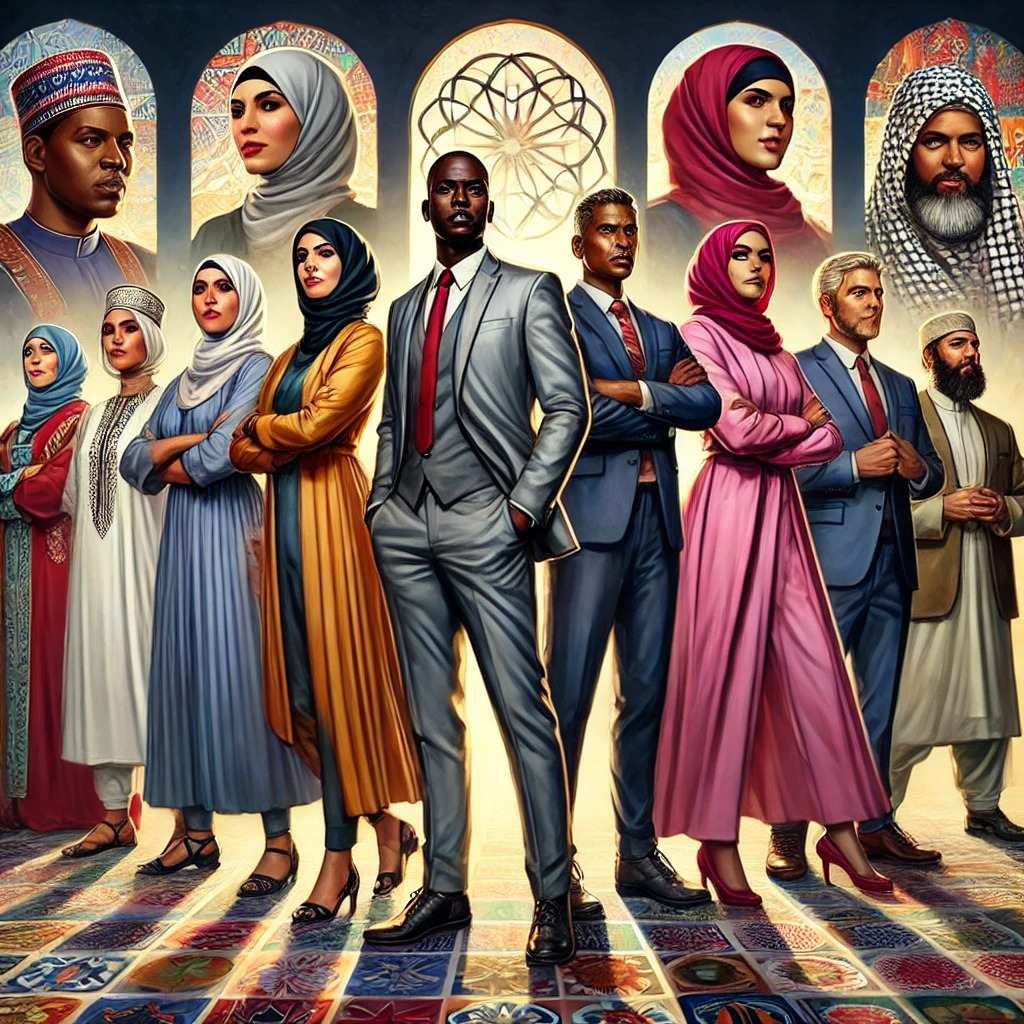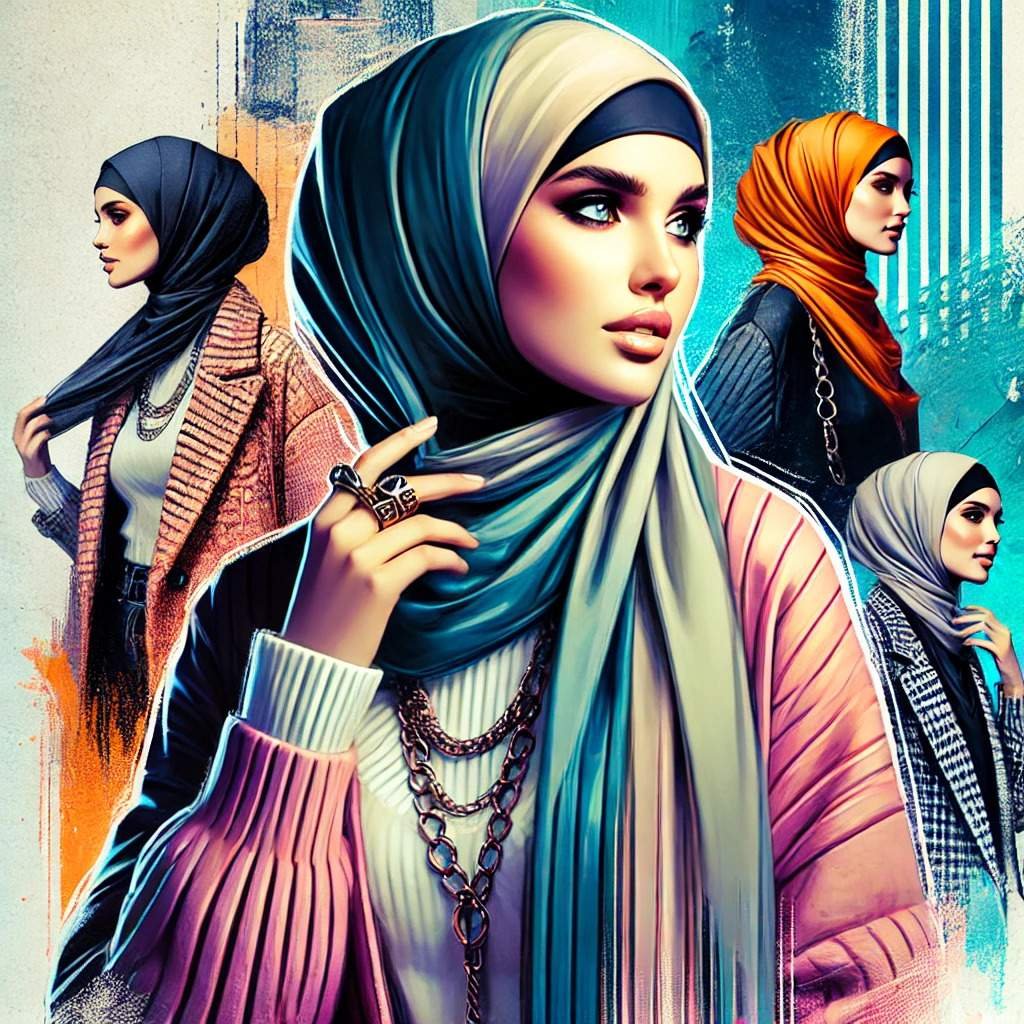Introduction
In today’s global fashion scene, hijabhoojup is emerging as a powerful statement of individuality and culture. This unique trend merges traditional hijab styles with contemporary flair, allowing women to express their identity and heritage in creative ways. With personal expression at its core, this style showcases how one can embrace both cultural roots and modern trends with bold style choices.
Hijabhoojup is more than just a fashion trend—it’s a vibrant tapestry that represents empowerment and personal expression. Women worldwide are embracing this style, taking it from simple clothing to a bold statement of confidence and elegance. Cultural influences blend seamlessly with modern creativity, making this trend both dynamic and rich in meaning.
When we delve deeper into hijabhoojup, we uncover its essence—an empowering fusion of fashion and tradition. For many, this head wrap symbolizes not just a way to dress but a profound expression of heritage and cultural pride. Whether you’re already an enthusiast or simply curious, understanding the significance behind this trend can bring a new depth to its style and purpose.
As more people discover the power of hijabhoojup, it is gaining increasing traction online and in communities worldwide. This evolving trend, which blends both contemporary and traditional elements, offers an exciting opportunity for creative expression. Through DIY techniques and style choices, one can create the perfect hijabhoojup, customizing it to fit their everyday look or for special events.
Understanding Hijabhoojup
Hijabhoojup is an exciting combination of traditional hijab styles and modernity. It brings together fashion and modesty, allowing women to maintain their beliefs while embracing innovation. The trend blends traditional practices with innovative touches, making it a unique and powerful statement of personal style.
This cultural phenomenon goes beyond being just a style; it’s a reflection of individuality and identity. Women express their personalities through the use of fabrics, colors, and patterns while remaining true to the boundaries of modest dress. It’s an embodiment of creativity within tradition, a way to assert who they are without compromising their values.
One of the key factors in popularizing hijabhoojup is social media. Influencers around the world use this platform to showcase diverse looks that inspire millions, helping to spread the idea of fashion that empowers while staying aligned with faith. Online communities come together to celebrate this modern take on an age-old tradition, which gives it even more significance in the fashion arena.
Whether it’s for business or relaxed occasions, hijabhoojup provides versatility. It allows for easy interchange between daytime wear and nighttime outfits. This ability to adapt makes it a great option for every woman who wants to stay true to her beliefs while feeling confident and stylish in any situation.
At its heart, hijabhoojup is about empowerment. It offers women a way to embrace both individualism and community, blending the best of tradition with the latest tendencies in fashion. It’s a journey of self-expression, where empowerment, aesthetics, and modesty come together harmoniously, showing the world how one can dress freely yet respectfully.
The Story and Progression of Hijabhoojup
Hijabhoojup has evolved significantly from its roots in ancient cultural practices. Initially, the hijab served a practical purpose, helping to protect women from the elements and allowing for modesty. Over the years, it transformed into something much deeper—a symbol of faith, identity, and cultural pride.
The modernity of today’s hijabhoojup style is a result of the blending of tradition with innovation. Over time, designers have incorporated new elements such as colors, patterns, and fabrics. The art of crafting unique wraps and adding intricate details has allowed women to express their individuality while maintaining the cultural and religious integrity of the hijab.
As the globalization of fashion has spread, hijabhoojup has become more than just a modest garment. It became a statement, showing that modesty can also embrace modernity and fashion. The trend started to reflect the individuality of each person, with variations seen across regions, making it adaptable to the ever-evolving tastes of today’s world.
The evolution of hijabhoojup also highlights a change in societal attitudes toward Muslim women. What started as an expression of modesty is now a freedom of self-expression, with women confidently embracing and shaping their personal styles while staying true to their faith. This transformation reflects the rise of personal expression in many parts of the world.
Today, hijabhoojup continues to evolve, reshaping ideas of identity and modesty. Patterns, cuts, and fabrics are constantly being explored, pushing the boundaries of traditional attire into exciting new areas. It stands as a testimony of how faith, fashion, and modesty can coexist harmoniously.
The influence of hijabhoojup is clear in both its design and its significance. More women around the world are embracing the trend every day, with each individual adding her own touch of creativity, making the hijabhoojup a truly dynamic style statement in the modern world.
How Hijabhoojup Inspires Women

Hijabhoojup gives women a chance to challenge traditional beauty standards and redefine their own identity. By choosing this style, women express their autonomy and individuality, embracing a new standard of confidence and strength.
It’s not just about fashion—it’s about empowering women to stay true to their cultural heritage while exploring modern trends. The blend of cultural values with contemporary looks helps women celebrate their uniqueness without compromising their values.
Hijabhoojup creates spaces where women connect with each other, share experiences, and support each other’s expression. Through this community, they embrace their identities while breaking down stereotypes and empowering one another.
When wearing hijabhoojup, women express their resilience and creativity by challenging norms and celebrating their diversity. It’s an act of freedom—defying restrictions and sending a clear message that women have the power to shape their own journey.
This powerful look embodies boldness, where women are no longer just following conventional ideals. Instead, they proudly wear their culture and values, showing the world their self-expression knows no bounds.
The Convergence of Fashion and Faith
Fashion is much more than what we wear. It is an expression of personal beliefs and identity that helps us tell a story about who we are. Many people see clothing as a canvas to showcase their creativity and style, while others see it as a reflection of their faith and tradition.
In the case of hijabhoojup, the blend of fashion and religion is especially strong. It embodies the intersection of modern design and spiritual significance, allowing women to embrace their cultural values while maintaining their individuality. The vibrant colors and intricate patterns speak to the power of expressing one’s unique style without compromising on modesty.
As fashion evolves, the perception of religious attire like hijabhoojup changes as well. It’s not only a symbol of modesty, but now it also reflects confidence and strength. Women wearing hijabhoojup are redefining traditional beauty standards with bold statements that incorporate both their faith and their individuality.
The industry is opening doors for a more inclusive approach, allowing hijabhoojup to be seen as a trendy and empowering choice. These styles encourage open dialogue about the place of faith in the fashion world, where values like inclusivity, diversity, and empowerment are prioritized.
Ultimately, hijabhoojup shows that fashion and faith can coexist in harmony. It is a perfect example of how clothing can express both cultural pride and personal beliefs, offering an opportunity to blend tradition with modern influences. This continuous evolution is reshaping the way we view both fashion and religion, making it clear that fashion does not have to compromise faith.
Challenging Stereotypes through Hijabhoojup
Hijabhoojup is reshaping the world of fashion and faith, challenging societal perceptions of what it means to wear a hijab. It combats preconceived notions by presenting a vibrant and bold image of self-expression that empowers women globally.
Through social media, women showcase their individual styles, using hijabhoojup as a tool to communicate their identity. This trend celebrates diversity and individuality, breaking free from old ideas and embracing both faith and modernity. It’s a clear statement that a hijab can be both stylish and meaningful.
The patterns, colors, and styles of hijabhoojup create new opportunities for representation, as women embrace their cultural roots while asserting their personal style choices. Each post, shared by thousands, amplifies the movement towards understanding and acceptance in the broader community.
Hijabhoojup isn’t just about fashion; it’s about empowerment and defying stereotypes. It’s a chance for women to reshape how the world views modesty, using their choices to redefine beauty standards and challenge narrow views of identity.
This growing movement reflects the shifting dynamics of fashion and faith, where visibility and diverse expressions no longer feel confined by tradition. It shows how a simple choice to wear hijabhoojup can shift conversations, helping people break free from traditional restrictions.
Prominent Leaders Shaping the Hijabhoojup Movement

In the world of hijabhoojup, certain figures stand out for their bold and inspiring impact. One of these trailblazers is Dina Tokio, known for blending fashion with heritage in a way that redefines modern modesty. Through her vibrant style and presence on social media, she has empowered countless women to embrace their identities.
Another influential figure is Halima Aden, the first hijabi model to appear on a magazine cover. Her presence in high fashion challenges traditional norms while also promoting diversity within the industry. Halima’s work goes beyond just modeling; it’s a testament to how fashion can be a form of expression and a platform for women’s empowerment.
Amani Al-Khatahtbeh, founder of MuslimGirl.com, is also a pivotal figure. Through her platform, she uses her voice to amplify the experiences of Muslim women, creating a space that celebrates their stories and addresses the challenges faced by many. Her work encourages women to embrace pride in wearing hijabhoojup as a symbol of faith.
These powerful women are shifting perceptions of culture and faith in the world of fashion. By breaking barriers and creating visibility, they are not just promoting style; they are redefining what it means to wear a hijab with pride and authenticity.
With each step they take, these figures are inspiring younger generations to challenge stereotypes and stand strong in their individuality, fostering a greater sense of understanding and empowerment across the globe.
Final Thoughts
Hijabhoojup is reshaping how we view fashion and faith. It brings together cultural values and personal expression, creating a unique space for Muslim women. With vibrant designs and a mix of modern and traditional elements, it challenges misconceptions while celebrating each individual’s identity. The brand offers more than just wearable clothes; it provides an opportunity for women to express themselves confidently.
Through this powerful brand, role models like models are breaking the barriers of stereotypes. These women, with their style and creativity, inspire others to embrace their identities without fear. By doing so, they pave the way for more diversity in the fashion world, offering different and fresh perspectives that reflect innovation and the evolving needs of clients.
As a consumer, embracing this brand means stepping into a world of possibilities, where one can evolve and find styles that resonate with their unique journey. The versatility and fashionable choices offered by Hijabhoojup empower women to be confident while staying true to their cultural and religious beliefs. Embracing this new trend is more than just about clothes; it’s about joining a movement of understanding, respect, and inclusivity.
What Hijabhoojup truly brings is an ongoing journey of self-expression. The possibility to grow, evolve, and honor one’s faith with style is a beautiful thing. The blend of culture and faith seen in these designs serves as a testament to their commitment to pushing boundaries and offering something truly special to everyone who seeks it.
FAQs
1. What is Hijabhoojub?
Hijabhoojup is a blend of tradition and modernity, combining the spiritual significance of the hijab with contemporary fashion styles. It empowers women to express their identities while honoring their faith and cultural roots, breaking stereotypes along the way.
2. How does Hijabhoojup challenge stereotypes about Muslim women?
Hijabhoojup helps to empower women by providing them with an opportunity to embrace their identity through vibrant, stylish, and versatile clothing. It breaks the traditional misconceptions about the faith and roles of Muslim women, promoting understanding and diversity.
3. Can Hijabhoojup be considered a fashion statement?
Yes, Hijabhoojup is much more than modest attire. It is an evolving fashion choice that highlights personal expression and offers opportunities for innovation in terms of both style and faith. This trendy blend allows women to wear wearable clothes that also celebrate their heritage and diversity.
4. How does social media play a role in promoting Hijabhoojup?
Through platforms like social media, Hijabhoojup has gained visibility. Influential figures and role models have used their online presence to promote the style, inspiring women and showcasing the versatility of veil cloths while challenging cultural norms.
5. What makes Hijabhoojup a versatile option for Muslim women?
Hijabhoojup caters to the diverse needs of Muslim women by offering fashionable, comfortable, and suitable choices for different occasions. The designs offer creativity and promote individuality, allowing wearers to integrate their faith with their unique style.
6. Who are some of the influential figures in the world of Hijabhoojup?
Role models like Dina Tokio, Halima Aden, and Amani Al-Khatahtbeh have inspired women around the world with their bold expressions of faith, while also redefining beauty standards and embracing fashion in a contemporary way.
7. How does Hijabhoojup promote inclusivity?
By celebrating diversity and promoting understanding, Hijabhoojup fosters a more inclusive environment. It welcomes women of different backgrounds to embrace their cultures while enjoying stylish yet modest options that adhere to their personal beliefs.
8. How has Hijabhoojup evolved over time?
The journey of Hijabhoojup continues to evolve as it brings new possibilities to fashion, allowing for more innovation and creativity while staying true to traditional values. Its commitment to fashionable yet respectful clothing has helped redefine modern modesty.
ALSO READ
1: https://globaltimeblog.com/choosing-your-perfect-bankrab-shoe/
2: https://globaltimeblog.com/exploring-the-possibilities-of-waethicc/
3: https://globaltimeblog.com/this-edition-is-limited-pg23-tshirt-a-deeper-look/


